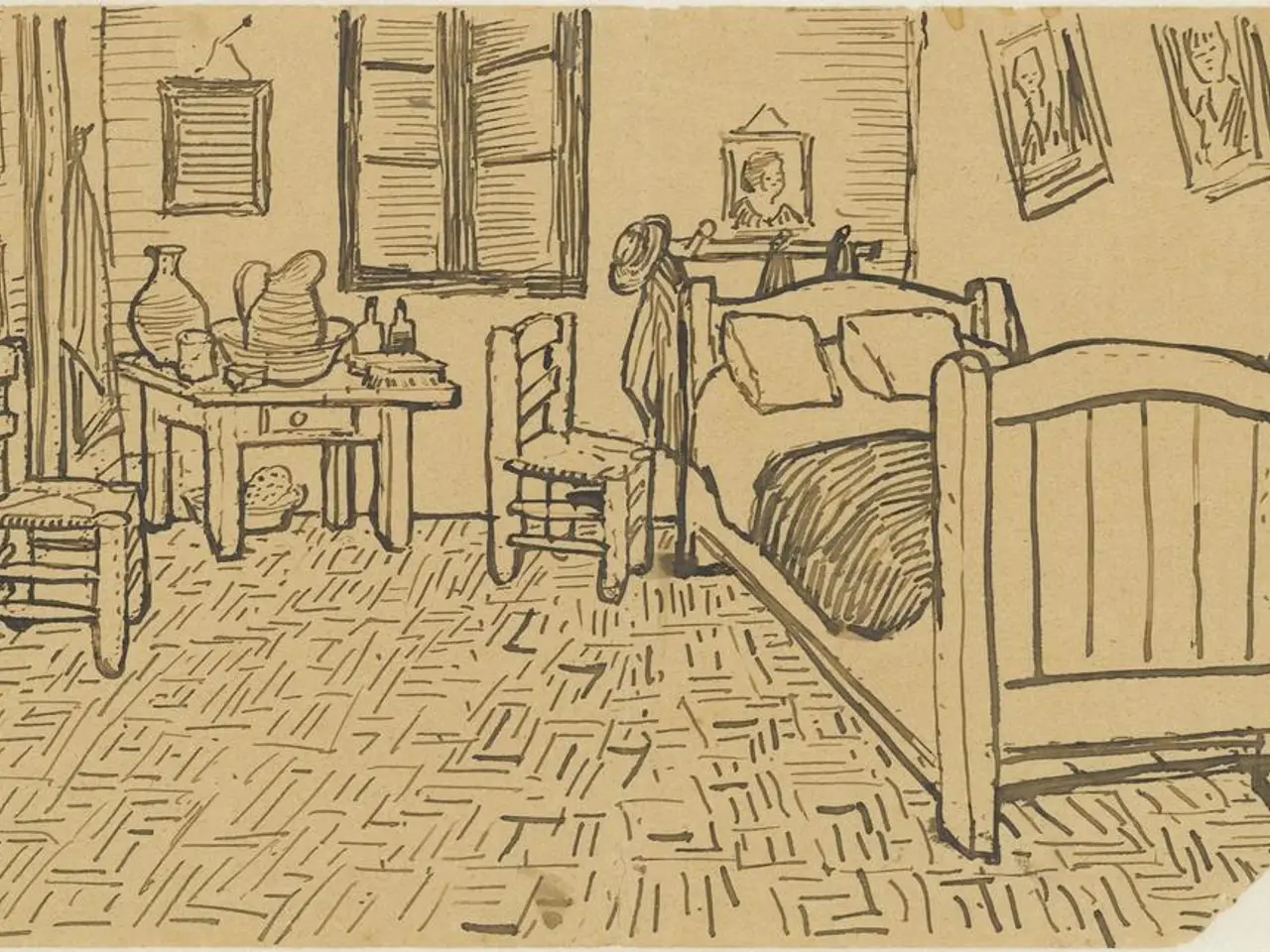Home Art Security: Safeguarding Your Artwork Within Your Residence
In the world of art, preserving the integrity of your collection is paramount. Here are some essential practices to ensure your art pieces remain in pristine condition.
Mounting art correctly is key to avoiding damage. Use the correct mounting techniques to prevent any potential harm. Document any changes in the art pieces or their environment during inspections.
Choosing the right frame is equally important. Opt for frames made from quality materials that resist fading and moisture. For works on paper, like prints and drawings, store them in acid-free materials, keep them flat or rolled, and avoid moisture. Use UV-filtering glass for framed pieces and LED lights for proper lighting.
Protective coverings like glassine or acid-free paper are valuable for paintings, while archival boxes designed with acid-free materials, moisture-resistance, and custom sizes are essential for storing artwork safely.
Display cases such as glass display cases, wooden display cabinets, and acrylic cases can protect art from dust and damage. Sculptures, being fragile and heavy, require sturdy shelving, avoiding high humidity, and keeping them away from children and pets.
Regular inspections should be conducted monthly to check for dust accumulation, signs of pests, and changes in the environment. Proper framing is crucial for preserving the artwork's integrity. Ensure the frame is sturdy and well-constructed, check for cracks or discoloration, and ensure frames are not damaged or loose during inspections.
Maintaining ideal conditions for storing art at home involves keeping the temperature stable around 65-75°F (18-24°C), with relative humidity between 40-60%, preferably close to 50%. For lighting, minimize exposure to light by using indirect lighting with illuminance levels below 200 lux and avoid any direct sunlight or strong artificial light.
To maintain these conditions, store art on interior walls away from heat sources, moisture sources, and direct sunlight. Avoid attics, garages, or basements with extreme or fluctuating temperature and humidity. Ensure good air circulation around stored artworks to prevent microclimates and moisture buildup.
Use climate control tools like air conditioners, dehumidifiers, or humidifiers to maintain stable humidity, especially important to keep humidity below 70% to prevent mold growth. Avoid wrapping art directly in plastic to prevent moisture trapping; use breathable materials like acid-free paper or cloth if needed.
A typical well-maintained household environment at 25°C (77°F) with controlled humidity can be a suitable storage place if walls and nearby surfaces are dry and monitored for moisture or pollutants.
In summary, the ideal home storage conditions for art are:
| Parameter | Recommended Range | |-----------------|-----------------------------------| | Temperature | 65-75°F (18-24°C), stable | | Humidity | 40-60% relative humidity | | Lighting | <200 lux, indirect; no direct sunlight or UV exposure |
Maintaining these conditions helps prevent warping, cracking, mold, discoloration, and premature aging of artworks stored at home.
When handling art, wash your hands before touching it, support the artwork from the bottom, never touch the front of a painting, and use a stable surface for resting artwork. Create a checklist for inspections that includes checking for dust, signs of pests, and ensuring the environment remains stable.
Insurance is vital for protecting the art collection. Choose an insurance option that fits your needs, such as homeowner's insurance, specialized art insurance, or rider policies. Regularly update your policy to reflect any changes in your collection.
For best results, follow guidelines for controlling light, temperature, and humidity levels, regularly check your collection for damage, and store them in appropriate materials. Securing your artwork at home is crucial. Consider options like installing motion sensors, using security cameras, and locking windows and doors.
[1] Art Storage and Conservation [2] Art Storage Guide [3] Art Storage [4] Art Storage and Display
- To preserve the longevity of your home-and-garden décor, carefully choose suitable frames for your artworks that resist fading and moisture, similar to selecting the right storage boxes designed with acid-free materials, moisture-resistance, and custom sizes.
- In addition to safeguarding your art collection, home improvement projects can also enhance your lifestyle by improving the overall ambiance of your home. Invest in protective display cases for art pieces to ensure a well-curated home-and-garden setup.




